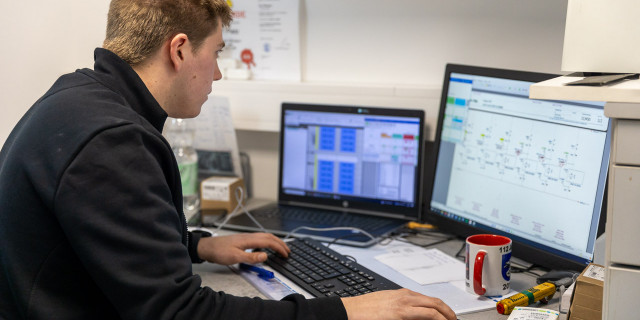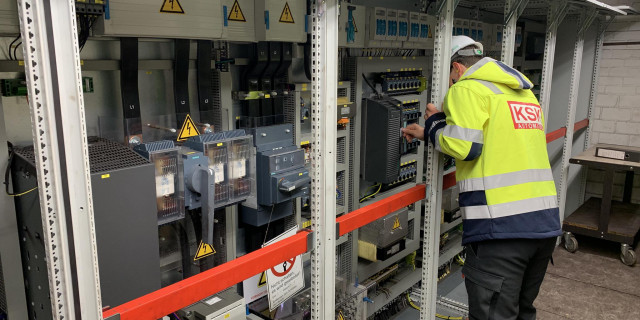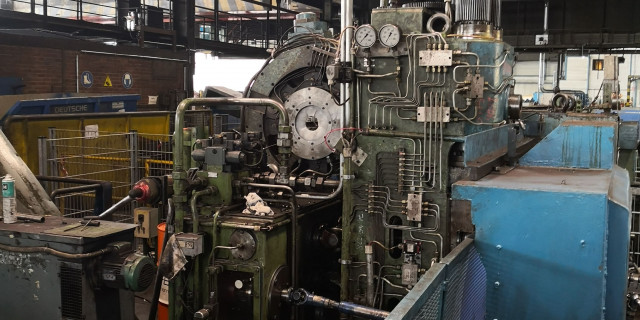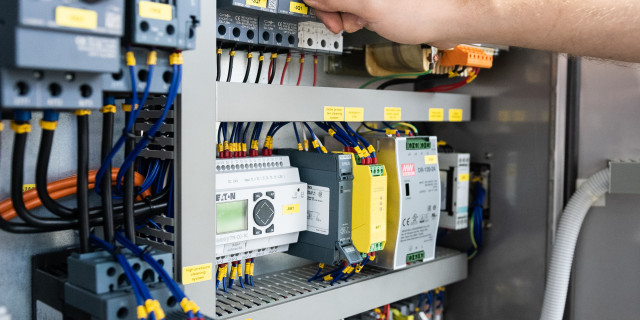
Innovation built into the program.
We implement the process engineering you have designed in terms of programming. However, our automation engineers are often much more than just programmers. Their cross-industry experience makes them innovators. Their many years of familiarity with a wide variety of systems, requirements, and problems make them an automatic quality assurance measure for your process engineering. Take advantage of our colleagues as your contact and discussion partners for all aspects of automation and control technology.
Your contact

Christoph Budde
Managing director
+49 (0) 2364 10539 -130
budde@kskgruppe.de
Table of contents
-
What is PLC programming and why is it important?
- The importance of programmable logic controllers in industry
- Basics of PLC programming: What do you need to know?
- Important advantages of PLC programming
PLC programming: Fundamentals and application of programmable logic controllers
PLC programming plays a crucial role in modern industrial automation. Programmable logic controllers (PLCs) are used to control machines and systems efficiently and reliably. In this article, we will examine the basics and importance of PLC programming, explain the different programming languages for PLCs, and provide practical tips on how to create a simple PLC program.
What is PLC programming and why is it important?
The importance of programmable logic controllers in industry
PLC programming has revolutionized the way industrial processes are controlled. A programmable logic controller is a special computer designed to perform industrial automation tasks. PLCs enable machines and production systems to be controlled flexibly and precisely. PLC systems are indispensable in the automotive and mechanical engineering industries in particular, as they automate and optimize complex processes, thereby increasing efficiency and productivity.
Basics of PLC programming: What do you need to know?
To get started with PLC programming, you need to understand some basic concepts and techniques. First, it's important to know the different components of a PLC system, such as the CPU, inputs and outputs, memory, and networks. A basic understanding of digital signals and how sensors and actuators work is also necessary. Since PLC systems are often used in industrial automation, knowledge of standards such as IEC 61131-3, which define the programming languages for PLCs, is essential.
Important advantages of PLC programming
PLC programming offers numerous advantages that make it a preferred choice in industry. One of the biggest advantages is flexibility. PLCs can be easily reprogrammed to meet new requirements or optimize processes. In addition, PLC systems are very reliable and safe, making them ideal for critical applications. Another advantage is the ability to automate complex control and regulation tasks, minimizing human error and improving production quality.
How can you learn PLC programming?
Introduction to PLC programming: First steps
Getting started with PLC programming can be challenging, but with the right resources and a structured approach, it is entirely feasible. Beginners should first familiarize themselves with the basic concepts and components of a PLC system. It is helpful to become familiar with a common PLC platform such as Siemens TIA Portal. A hands-on approach, where you write and test small programs yourself, is particularly effective for developing a deep understanding.
Resources and courses on PLC programming
There are numerous resources and courses specifically designed to teach PLC programming. From online courses offered by universities and technical schools to specialized training sessions from PLC manufacturers such as Siemens, learners will find a wide range of options. It is advisable to choose courses that cover both theory and practice, as practical exercises improve understanding of programming and application.
Practical tips and tricks for beginners
For beginners in PLC programming, some practical tips are particularly helpful. First, they should write simple programs and gradually make them more complex. The use of simulation tools can also be very useful for testing programs before they are applied to real machines. It is important to write structured and well-commented code, which makes errors easier to find. Finally, talking to experienced programmers and actively participating in forums and specialist groups is a good way to keep learning and improving.
What PLC programming languages are there?
Overview of IEC 61131-3 programming languages
The IEC 61131-3 standard defines the five common programming languages for PLCs. These include the text-based languages instruction list (AWL) and structured text (ST), as well as the graphical languages function block diagram (FBD), ladder diagram (LD), and continuous function chart (CFC). Each of these programming languages has its own specific advantages and disadvantages and is used for different types of control tasks.
Differences between text-based and graphical programming languages
Text-based programming languages such as AWL and ST offer a high degree of flexibility and are particularly suitable for complex algorithms. However, they require extensive programming knowledge. Graphical programming languages, on the other hand, such as KOP and FBS, are more intuitive and allow a visual representation of the control logic. They are particularly well suited for representing and understanding process sequences, as they look similar to electrical circuit diagrams.
When should which programming language be used?
The choice of programming language depends on the specific application and requirements. Graphical languages such as KOP are best suited for simple control tasks and rapid prototyping. For complex calculations or when greater programming flexibility is required, text-based languages such as ST or AWL are ideal. Often, a combination of both approaches is used to leverage the advantages of both worlds. PLC programmers should therefore be able to master several programming languages and select the appropriate language depending on the situation.
How do you create a simple PLC program?
Step-by-step guide to creating a PLC program
The creation of a PLC program begins with a clear definition of the requirements and the desired functions. The next step is to select the appropriate programming language. When creating a program, open the PLC tool and program the logic of the control step by step. It is important to test each element of the control system to ensure that it works as intended. Once the logic has been tested and confirmed, the program can be loaded onto the PLC and put into operation.
Example of a simple PLC control system
A simple example of a PLC control system could be switching a motor on and off based on a sensor signal. When the sensor receives a specific signal, the PLC turns the motor on. As soon as the signal ends, the PLC turns the motor off. This simple PLC program would use the basic functions of a contact and an output to perform the desired control tasks. Such programs are easy to create and provide a practical introduction to PLC programming.
Troubleshooting and optimization of the PLC program
Troubleshooting is an essential part of programming. Common problems can be identified by step-by-step verification of the code and testing of individual control elements. It is important to identify and correct logical errors early on to minimize downtime. Optimizing the PLC program involves reviewing and improving the efficiency and speed of the program. This can be achieved by reducing unnecessary steps and using efficient programming languages.
How does input and output control work in a PLC?
Basics of input and output control
A central aspect of PLCs is input and output control. Inputs are signals sent from sensors or other devices to the PLC, where these signals are assigned to specific addresses. Outputs are signals generated by the PLC to control various actuators such as motors, valves, or lamps. The input and output states are processed within the PLC's CPU to perform the desired control actions.
Examples of digital inputs and outputs
Digital inputs and outputs are widely used in industrial automation. A digital input signal could be, for example, a switch signal from a pushbutton that sends a 1-bit signal to the PLC. A digital output signal could be a signal that switches a relay to start or stop a machine. These digital signals are binary and therefore have only two states: on or off. Such simple signals are the basis of many PLC-controlled systems and applications.
Addressing and functioning of inputs and outputs
The addressing of inputs and outputs is crucial for the functionality of the PLC system. Each input and output of a PLC is addressed via a specific address. These addresses serve as identifiers for the signals that come from or are sent to the respective inputs or outputs. Correct addressing is necessary so that the PLC can process the signals correctly and execute the control logic. The various inputs and outputs are referenced to these addresses in the programming in order to trigger specific actions or reactions.


Data Export from S7 Controllers

Crane Automation

Retrofit

